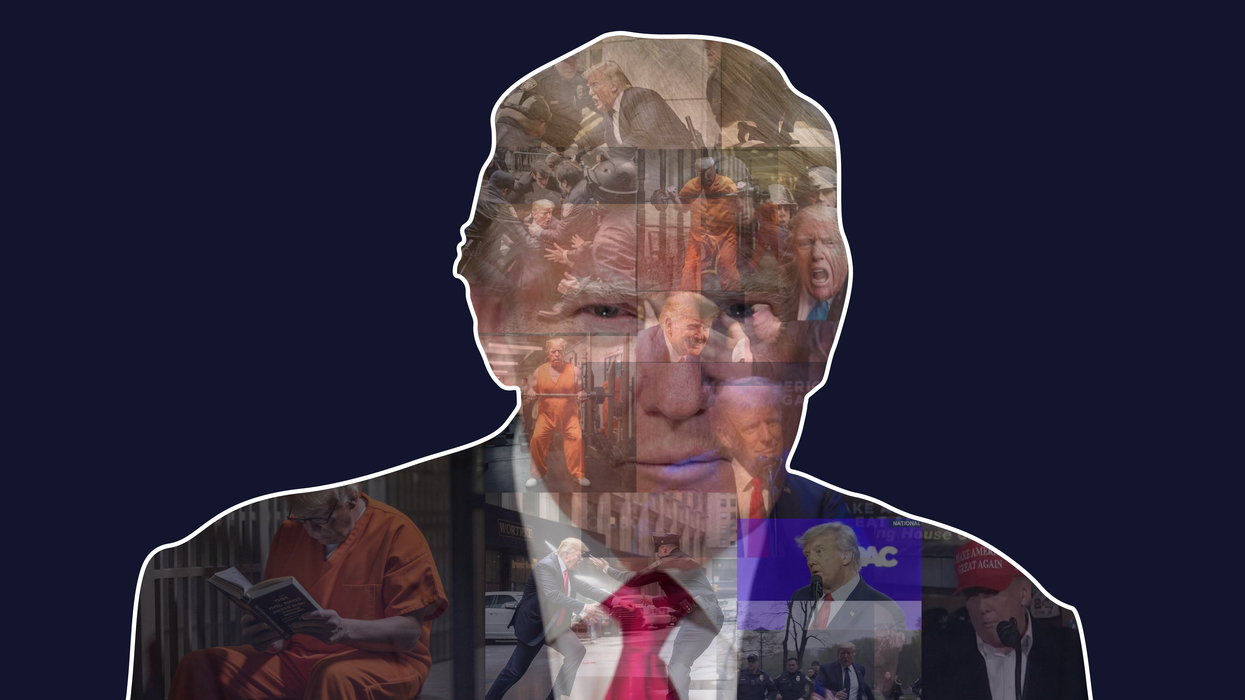Generative AI Apps Still Have to Get A Lot Better Before They Start Swaying Elections

With rumors swirling this week about the potential (now delayed) arrest of former president Donald Trump, social media responded as it tends to do with any major news story: by memeing the heck out of it. In this case, imaginative online pranksters took to generative AI art apps like Midjourney and Stable Diffusion to create fake images of Trump being placed under arrest and taken to prison. One narrative thread of AI imagery – depicting Trump’s journey from arrest to prison to escape and ultimately seeking sanctuary in McDonald’s was apparently enough to get British journalist Eliot Higgings temporarily banned from the Midjourney app entirely.
Naturally, this led to another round of deep concern from the press about the potential future implications of AI art and other kinds of “deepfake” technology. Soon, these editorials warn, we may be completely incapable of distinguishing fact from fiction or trusting even evidence we can see and hear. With new AI apps and concepts flooding the internet every day, we’re now repeating this news cycle every few weeks. It was only late February when everyone was concerned about those vocal deepfakes, following the spread of clips in which Joe Biden was trapped in the “Skinamarink” house, or recalled the events of the 2011 film “We Bought a Zoo.”
Certainly, no one could deny the power a single potent image can have on public perception. How many times have social media users shared that memorable photograph of the Clintons and Trumps at a party together chatting it up, or Elon Musk posing next to convicted sex trafficker Ghislaine Maxwell, or those Charlotesville protesters with the tiki torches. The whole concept of photojournalism is built around the concept that a carefully-captured image can tell a story just as effectively as a 500-word article.
But is AI Art actually believable?
It’s nonetheless worth pointing out in light of the viral success of Higgings’ and others’ “Trump Arrest” AI art threads that we’re not yet in a world in which apps like Midjourney could potentially sway elections. Consumer-facing AI products can certainly produce compelling images based only on simple prompts, but once you get out of the realm of relatively simple portraits and straight-forward concepts, the results become exponentially less photorealistic. Even in Higgins’ own thread, static shots of Trump in a prison cell alone reading a book or slouching against a fence look way more compelling than action shots of him shooting hoops with other inmates or fleeing authorities to a fast food joint under cover of night. (Though the Golden Arches come through perfectly, even the McDonald’s name doesn’t translate into AI; Midjourney reproduces their logo as reading “Minonad.”)
AI art apps famously struggle to reproduce the more nuanced and complicated bits of human anatomy like faces and hands (though there have been recent signs of improvement here). Some shapes and textures, like liquids, also remain problematic for the apps, though again there are some signs of hope on the horizon.
All the “sky is falling” editorials about how one day soon, you won’t be able to tell if a photo is real or AI prompt-based, begin with the core assumption that these proposed solutions will work out, and generative AI art apps will essentially become perfect very soon. And look, there is no direct evidence that this is wrong, and the fact that these apps exist in the first place is impressive.
But is it a guarantee that Midjourney will definitely get a lot better at photorealism in the near future, such that we have to be actively concerned when we see a photo of President Trump about whether or not we can believe our eyes? Is this the kind of thing we can “teach” software just by showing it thousands of individual labeled photographs and telling it “this is what reality looks like”? Does anyone even know?
The Pixar Problem
I’m reminded of a San Diego Comic-Con panel I attended in 2008. (Bear with me! I swear this is gonna link up.) Pixar did a presentation in Hall H that year previewing their latest film, “Up,” and the conversation included some insights into some of the more complicated animation challenges the studio had encountered to date. “Up” director Pete Docter was a veteran of one of the studios’ first and most-beloved films, “Monsters Inc.,” and he said that one of the chief obstacles to animating that film was the character of Sully, who’s covered in thick blue fur. When Pixar began work on “Monsters Inc,” their computer animation software didn’t yet know how to reproduce realistic tufts of hair.
This makes sense when you think about the way hair behaves in the real world. There’s uniform direction; all of Sully’s fur follows him around wherever he goes, and is impacted by his momentum, the wind, other characters and objects moving around, and so forth. But “fur” is not a single uniform object; it’s actually made up of thousands upon thousands of individual strands of hair, which don’t all behave in exactly the same way all the time.
Computers aren’t naturally that good at reproducing this kind of randomized group movement; it took Pixar animators years of diligent work and a whole lot of computer processing power to sort it out. Other complex substances and surfaces like water have also buguiled animators for years. Disney animators working on “Moana” specifically had to address the challenges posed by a movie in which the ocean was both a setting and a supporting character with new techniques and technologies. It’s the same situation with large crowds; they move as a unit, yes, but they’re actually made up of individual people, who also move around on their own. That’s tough for a computer to animate without very specific instructions.
Which (finally!) brings me back to Midjourney and AI art apps. The assumption that the computer will “figure out” all of these challenges on its own, just by being trained and retrained on more and more images, strikes me as a pretty significant one. We tend to view the advancement of technology as purely linear, a straight line from where we are now to “the future.” But in fact, a lot of innovations develop in starts and stops. An intractable problem presents itself, and it can take a relatively long time to sort out, if in fact it ever gets resolved. (It’s been more than a decade since we were first promised self-driving cars and truly immersive virtual reality were just a few years out, after all.)
Perhaps Midjourney will have an easier time with fur and juice and Times Square on New Years Eve than Pixar and Disney’s software had, and won’t require as much patient and careful direction and processing power to sort all of this out. But I’ve yet to see any evidence that it’s a guaranteed sure thing either.
- This ChatGPT Competitor Wants to Remember Everything for You, Forever ›
- Dark Money Influencers Are Placing Political Ads on TikTok, Mozilla Says ›
- Local Political Candidates Are Using TikTok To Communicate with Young Voters ›
- Art Created By Artificial Intelligence Can’t Be Copyrighted, US Agency Rules ›
- RNC Responds to Biden Reelection Bid with AI-Generated Ad - dot.LA ›




 Image Source: JetZero
Image Source: JetZero
